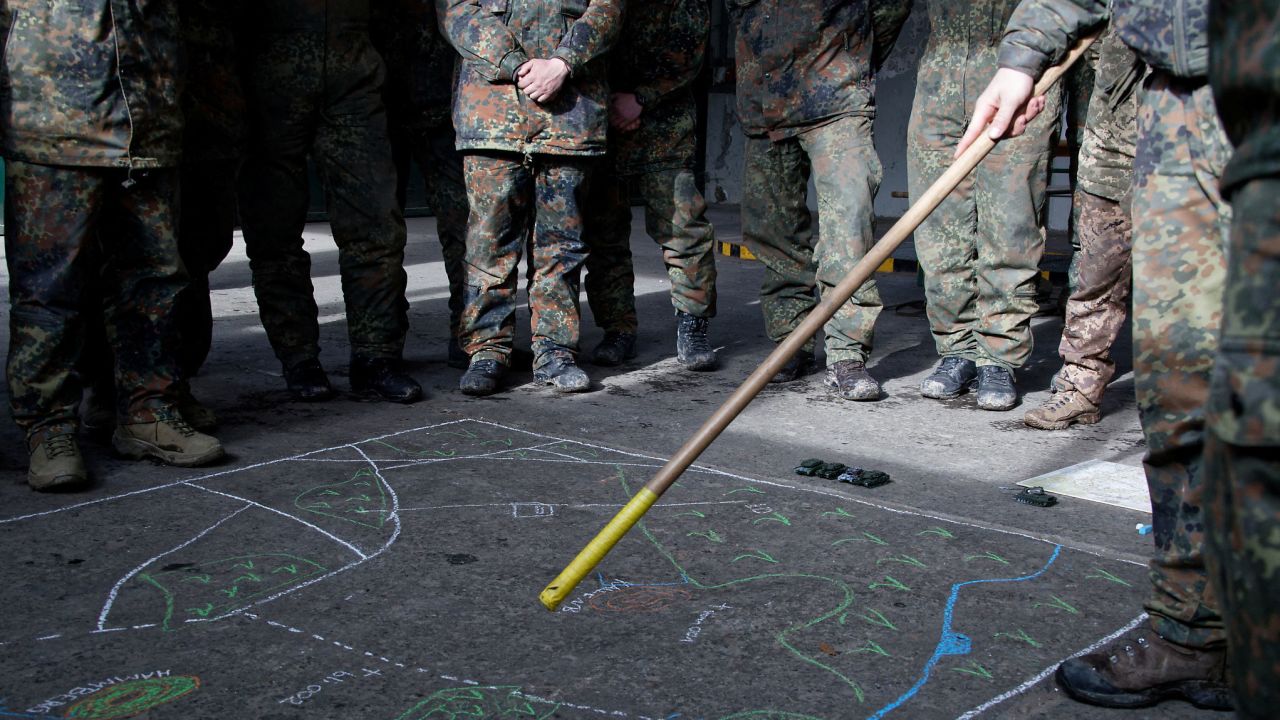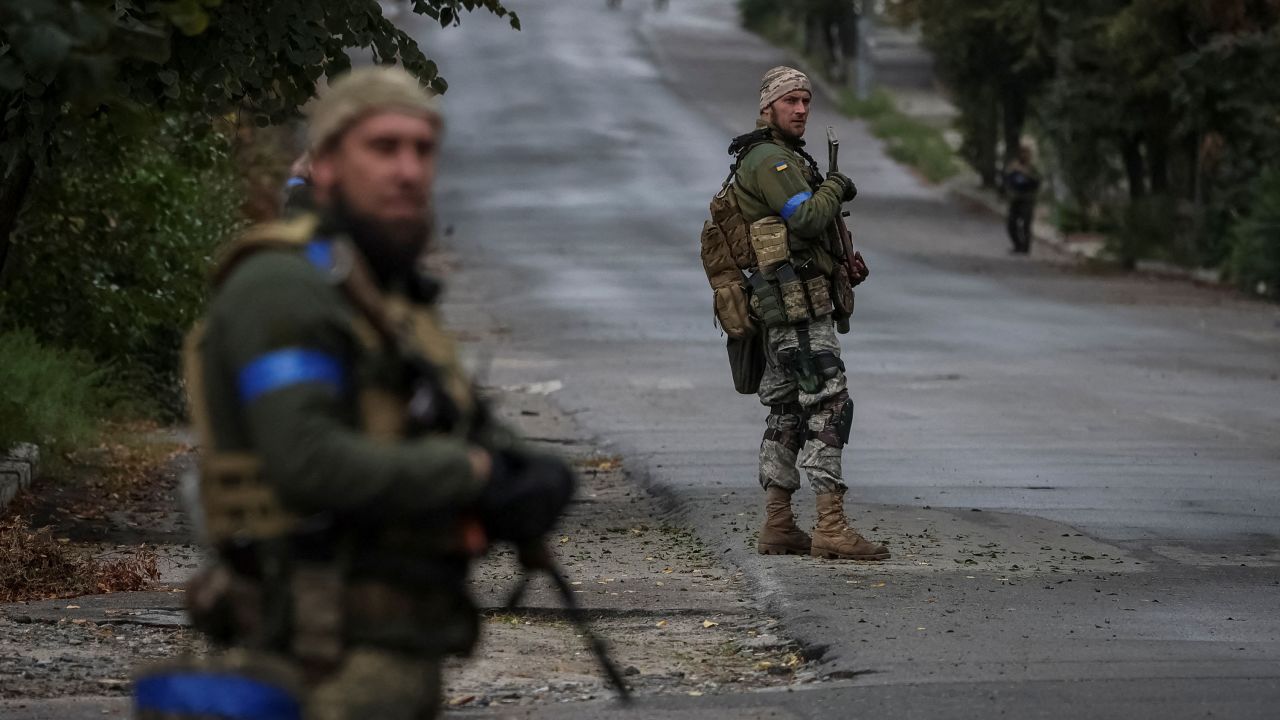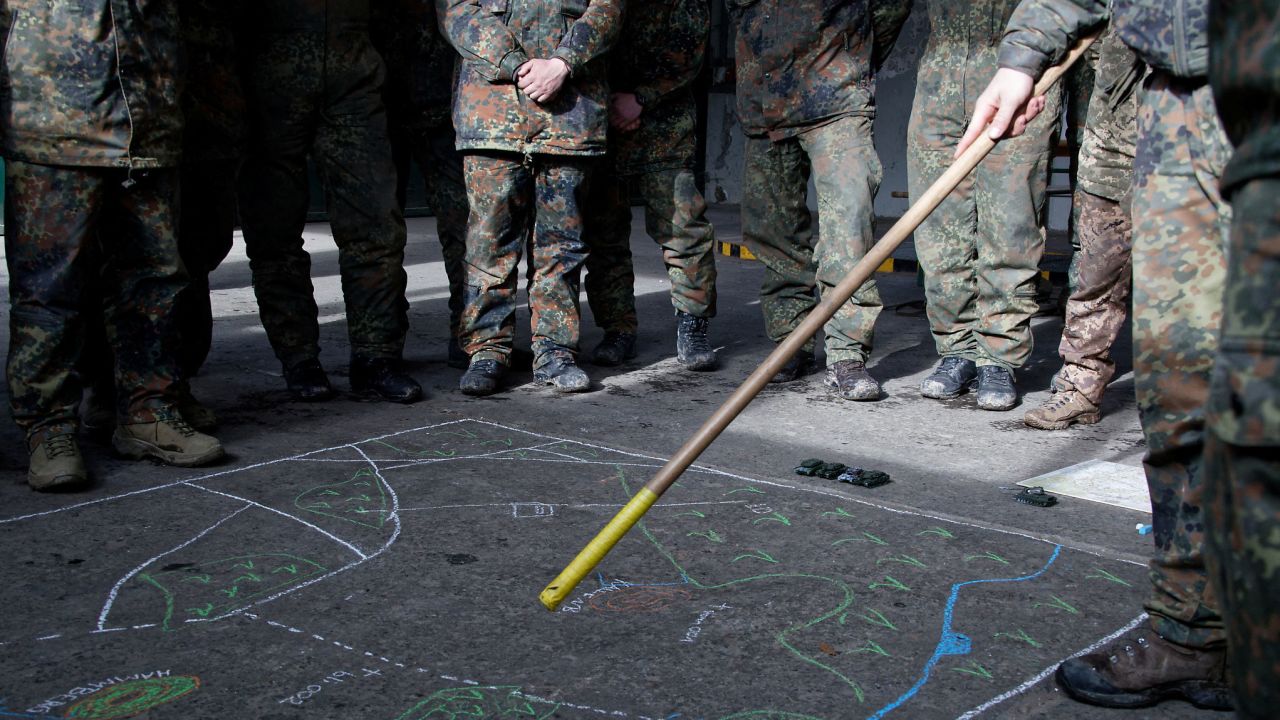hat has been the mantra of Ukraine’s military for months, one echoed by senior US and NATO officials since the winter.
So much for the idea. But can it be executed and if so where, when and with what? Even the Ukrainians themselves may not yet know as they study the 1,000-kilometer front line for Russian vulnerabilities, just as they did when suddenly launching the surprise September offensive in the northeast region of Kharkiv.
But they are aware it will be a crucial chapter in the conflict. Maj. Gen. Kyrylo Budanov, head of Ukraine’s Defense Intelligence, said in an interview last month that Russia and Ukraine will fight “a decisive battle this spring, and this battle will be the final one before this war ends.”
That suggests the Ukrainians may take their time to maximize capabilities. Predictions are a fool’s errand; there will be plenty of bluff and disinformation about intentions in the coming weeks. But preparations are well underway.
The essential preconditions for a Ukrainian counteroffensive include the completion of training and integration of new units, degrading the Russian rear, a resilient logistics chain and real-time intelligence.

Ukraine is standing up several new corps, each of which would comprise several thousand troops. “Included in these will not only be new Western tanks, infantry fighting vehicles, wheeled vehicles and other equipment but also a lot of engineering equipment,” Ryan told CNN.
These units may be nearly ready.
“Ukrainian sources have already telegraphed that they’re forming or have formed six to nine new brigades for counteroffensives,” said Kateryna Stepanenko at the Institute for the Study of War (ISW) in Washington DC.
Ryan says such ambitious offensives consume large amounts of fuel, munitions, food, medical supplies and spare equipment. The logistics chain – which may be hampered by poor weather more than armor – is critically important.
Where and when?
Senior US and Ukrainian officers carried out “table-top” simulations last month. The Chairman of the US Joint Chiefs of Staff, Gen. Mark Milley, said: “The Ukrainians are moving things around on these maps to determine what is their best course of action, and they determine the advantages and disadvantages of the risks associated.”
One clue – though it may be well-camouflaged – will be operations to strike logistics hubs, rear bases and ammunition stores deep behind the Russians’ front lines, both with long-range Western weapons, such as HIMARS, and sabotage operations. There’s already been an uptick in such attacks in southern Zaporizhzhia and Crimea.
Ryan, who writes the Futura Doctrina newsletter, said: “We could reasonably expect offensive action probably of different scales in at least two (and possibly more) locations in the east and south,” not least to confuse the Russians about where the main thrust will occur.
The south represents the greater dividend: an opportunity to split the Russian land corridor to occupied Crimea and reclaim some of Ukraine’s best farmland. Apart from Mariupol, much of the south has suffered less destruction than the cities of eastern Ukraine.
A successful strike southwards would make Russia’s defense of parts of Kherson it still holds untenable. It could also pave the way for Ukraine to recover control of the Zaporizhzhia nuclear power plant, and the canal that supplies fresh water to Crimea.
But Stepanenko agrees it would be a mistake solely to focus on one area. Offensives in the east and south could be mutually supporting, posing the Russians additional logistics and deployment challenges.
A counterattack in the Bakhmut area by a well-prepared force might signal the beginning of offensive action. Last week, the commander of Ukrainian land forces, Colonel General Oleksandr Syrskyi, was in the Bakhmut area and said: “Our task is to destroy as many enemies as possible and create the conditions for us to launch an offensive.”
What’s new?
The Ukrainians are showing off the stream of Western hardware that’s begun to arrive to enhance their ground forces. They’ve been sending tank crews for training on Leopard 2s and Challenger tanks in Germany and the UK, respectively.
Their missile defenses are steadily improving, and with the deployment of Patriot batteries will improve further. The first group of Ukrainian soldiers to train on the Patriots are now back in Europe.
But integrating units will be critical.
“Ukraine needs to increase its capabilities for combined arms warfare ahead of their counteroffensive. This requires a high degree of coordination between various Ukrainian brigades and integrating fires to support maneuver,” said Stepanenko at ISW.

Ukrainian soldiers stand around toy tanks while being trained to use Leopard 2 tanks at a shooting and training range in Germany in March.Bundeswehr/Reuters
Such warfare has not traditionally been part of the Ukrainian playbook and is not learned overnight. While the sweep through Kharkiv last September was a triumph and exploited Russian deficiencies in the area, the slog to regain Kherson was far more costly in personnel and materiel.
Over the last few months, the Ukrainians have been receiving equipment vital for any offensive action: demolition munitions, mine clearance hardware, mobile bridging capabilities and MRAPs – mine resistant vehicles.
In addition, more than 4,000 Ukrainian soldiers have completed combined arms training in Germany, including two brigades equipped with US-supplied Bradley Fighting Vehicles and US-made Stryker vehicles.
Two motorized infantry battalions consisting of 1,200 Ukrainian soldiers are still being trained in Germany.
Training to use engineering equipment supplied by the US is also going to be essential. The latest package of US aid announced in March included armored vehicle-launched bridges, which would accompany advancing units — as well as demolition munitions.

A Ukrainian army tank advances to the fronts in the northeastern areas of Kharkiv last September.Metin Aktas/Anadolu Agency/Getty Images
“This is important because the fight to come will need the Ukrainians to engage in combined arms obstacle-crossing to break into and penetrate Russian defenses, which include mines, anti-tank ditches, dragons’ teeth and the enhancement of natural obstacles,” Ryan said.
He says “there is no military endeavor that is more difficult to plan, orchestrate and execute.”
Western aid has sought to address Ukraine’s key capability gap in mobile firepower.
“Armored personnel carriers and infantry fighting vehicles will help ensure Ukrainian mechanized infantry can deploy safely to the combat zone,” Stepanenko said.
Western tanks will act as the “tip of the spear” but the question is whether sufficient numbers have arrived to make a decisive difference. Open-source information suggests that fewer than 100 Western main battle tanks are in Ukraine.
Russia’s response
Russia is of course acutely aware that Ukraine is planning fresh offensives. It has used the last several months to construct multiple layers of defense, especially in the south.
Ryan says that in addition the Russians likely have mobile counter-attack forces ready. Intelligence gathering and long-range strikes to degrade such units is an important element in Ukrainian planning.
Military historian Stephen Biddle writes that “shallow forward defenses can be ruptured with well-organized combined arms attacks, but deep defenses with meaningful reserves behind them still pose much harder problems for attackers.”
But Biddle also makes the point that the “best single predictor of outcomes in real warfare has … been the balance of skill and motivation on the two sides,” and this may augur well for the Ukrainians.
The Ukrainian armed forces have proved themselves agile, adaptable and innovative; most units have demonstrated high morale in the face of superior force. Over the past year, Western militaries have provided training in almost every facet of conflict, from tank warfare to logistics and leadership.
By contrast, Russia’s fall mobilization has not moved the needle much on the battlefield, and reports of dissent and poor leadership in a very top-down system suggest that the size of Russian capabilities may not be matched by performance.
Which brings us back to the exhaustion factor. For three months, Russian forces – including some of their best divisions – have been trying to break down Ukrainian defenses in four main zones. Apart from incremental gains in the Bakhmut area, they have made virtually no progress.
The quandary for the Russian high command is when and whether to tilt from offense to defense.
“At some point, [their offensives] are likely to culminate,” Ryan said. “They will need to decide whether they assume a more defensive posture in the coming weeks in order to absorb or respond to any Ukrainian offensives.”
Many constellations have to align if a Ukrainian counteroffensive is to succeed.
“They will want not only to surprise the Russians with the time and location of their main and supporting thrusts, but will want to generate an operational tempo that overwhelms the Russian ability to respond quickly or at the right time with the right force,” Ryan said.

While the sweep through Kharkiv last September was a triumph and exploited Russian deficiencies in the area, the slog to regain Kherson was far more costly in personnel and materiel.Gleb Garanich/Reuters
Success in the early stages would generate momentum. “The Ukrainians only have to make one penetration of the Russian tactical defensive lines to then flow through a torrent of exploitation forces,” which “in turn could force large-scale Russian realignments and withdrawals of its forces,” Ryan added.
That’s what the United States hopes for. “What Ukraine wants to do at the first possible moment is to establish or create momentum and establish conditions on the battlefield that continue to be in its favor,” said Defense Secretary Lloyd Austin in February.
The Ukrainians know that having received armor and other equipment worth tens of billions of dollars, and training for thousands of their troops, they need to show results to sustain the faith and support of the coalition. Next year, the US goes into election mode, with all the distractions that is likely to bring – something not lost on Moscow as it seeks to draw out the conflict.
The Ukrainians will want to have everything tried and tested, rehearsed and rehearsed again, before committing themselves to what will likely be a pivotal episode in the conflict.
